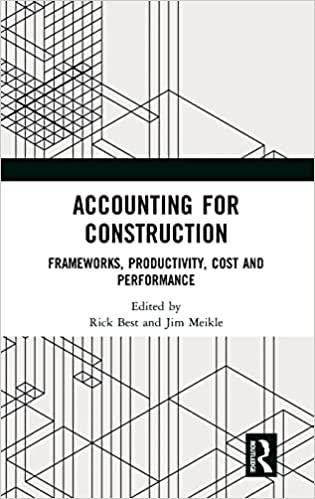Question
DFF is a listed company operating in property industry. The CEO was informed about the governments plan to develop a piece of land and he
DFF is a listed company operating in property industry. The CEO was informed about the governments plan to develop a piece of land and he is interested in bidding the project. The estimated after-tax cost of development is RM1.4 billion, where 30% will be payable upfront as deposit, and the balance will be payable based on the stage of completion at the end of each year. It is estimated that the project will be 60% completed in the first year and the project will be completed fully in the second year.
Upon completion, the property is expected to yield RM200 millions of rental income before tax annually. The incremental fixed costs including the depreciation is RM90 million per year. Due to the uncertainty of the economy, no growth is estimated for the rental income and costs. The property that is subject to depreciation and industrial building allowance is costing at RM700 million out of the RM1.4 billion cost of development.
DFFs accounting policy to set 5% straight-line depreciation on real property assets. The tax law allows the buildings in this project to claim industrial building allowance at 10% initial allowance and 3% annual allowance starting from the first year of completion (straight-line basis). This project is assumed to sustain thereafter and all the properties will not be sold or demolished. The current corporate tax rate is 24% and the tax are assumed to be paid at the same year when it incurs.
The CFO would like to propose a suitable financing method to finance the new project. Currently, there are two options available, namely a long-term borrowing or rights issue. The cost of capital is estimated to be 10% regardless of which financing method is used.
The summarized latest (current) financial statements are presented below:
| Statement of Profit and Loss | |||
| Revenue | 4,600 | 6,500 | |
| Cost of goods sold | (3,000) | (4,500) | |
| Operating expenses | (1,200) | (1,400) | |
| Operating profit | 400 | 600 | |
| Finance cost | (220) | (313) | |
| Net profit before tax | 180 | 287 | |
| Tax | (27) | (54) | |
| Net profit after tax | 153 | 233 | |
| Statement of Financial Position |
|
| |
| Non-current assets | 13,000 | 15,000 | |
| Inventories | 2,000 | 2,300 | |
| Trade and other receivables | 1,800 | 2,200 | |
| Cash and cash equivalents | 2,100 | 3,200 | |
| Trade and other payables | (2,500) | (3,000) | |
| 16,400 | 19,700 | ||
| Share capital (par value of RM1 per share) | 4,500 | 5,200 | |
| Retained profits | 4,000 | 4,100 | |
| Other equity reserves | 2,200 | 1,600 | |
| Long term liabilities | 5,700 | 8,800 | |
| 16,400 | 19,700 |
- Use capital budgeting method to solves the financial feasibility of this project proposed by the CEO
Step by Step Solution
There are 3 Steps involved in it
Step: 1

Get Instant Access to Expert-Tailored Solutions
See step-by-step solutions with expert insights and AI powered tools for academic success
Step: 2

Step: 3

Ace Your Homework with AI
Get the answers you need in no time with our AI-driven, step-by-step assistance
Get Started


